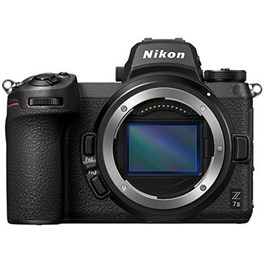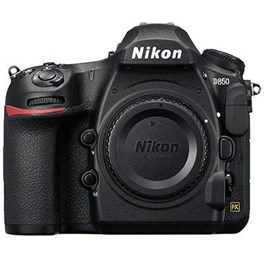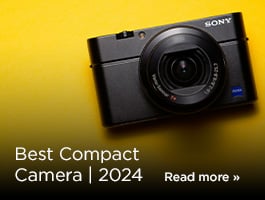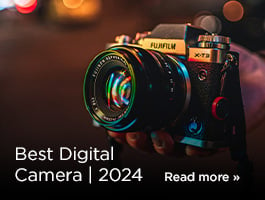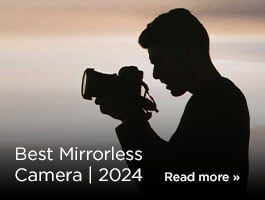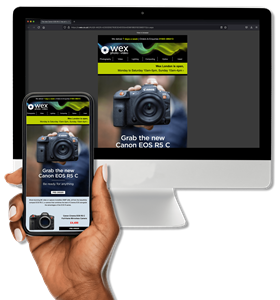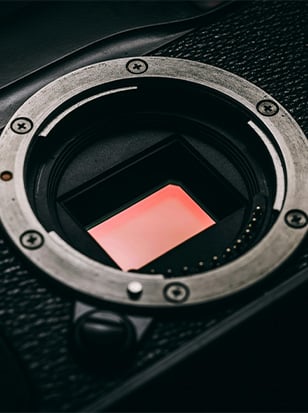
If you’re looking for some of the finest machines in photo and video right now, the best Nikon cameras are a heck of a place to start. Nikon has, of course, been one of the most famous names in photography for decades, the manufacturer having successfully reinvented itself multiple times to stay on top throughout the transition from film to digital, and then again from DSLR to mirrorless.
Our guide features the latest and greatest Nikon cameras, with all the most recent releases that have seriously impressed our technical team. We’ve included beginner-friendly cameras as well as high-end models, and have ensured to include options for different budgets — so don’t worry if you don’t have a huge amount to spend.
Read on to see which Nikon cameras we picked as the best of the best, including both mirrorless models from the Nikon Z range, and classic Nikon F DSLRs for those who prefer to shoot the old-fashioned way. And make sure you also check out our guide to the best Nikon lenses, to ensure you have the optimal glass for your new camera.
Best Nikon mirrorless cameras
Nikon’s mighty mirrorless range has helped the firm retain its status as one of the best camera brands of choice for professionals, enthusiasts and beginners alike. Introduced in 2018, the mirrorless Nikon Z system includes cameras with full-frame or smaller APS-C sensors — or FX and DX format, as Nikon calls them — giving the prospective Nikon photographer or videographer plenty of choice.
In this section of the guide, we’ve picked out just a few of the absolute best NIkon Z cameras — ones that have particularly impressed our team. We’ve included beginner-friendly and budget options as well as the pro stuff, to make sure everyone will be able to get started, and have provided some suggestions as to what types of shooting each camera is particularly suited for.
Best for beginners:
|
Pros:
Cons:
|
Sensor: 20.9MP APS-C CMOS Lens Mount: Nikon Z mount Video: 4K/60p (1.5x crop), Full HD 1080p/120p ISO Range: 100–51,200 (expandable to 204,800) Dual Card Slots: Single UHS-II SD |
For a long time, the original Nikon Z50 was the camera we’d point to when asked what the best beginner model in the mirrorless Z-range was. As such, we were pleased to see the long-awaited update arrive in the latter end of 2024 — the Nikon Z50 II. It doesn’t seem too different from the Z50 at first glance, with the same 20.9MP APS-C sensor.
However, the Z50 II inherits a number of high-end features from Nikon’s professional and enthusiast cameras, most significantly the Expeed 7 processor that’s used in the pro flagship Z9. This allows it to deliver next-generation speeds, particularly in terms of its autofocus system, which is highly advanced and offers sophisticated subject-recognition modes to lock onto and track specific subjects.
We also love the ergonomics of this camera — it’s on the light side, but features a vari-angle screen that gives you plenty of compositional flexibility when not using the viewfinder.
Best for enthusiasts:
|
Pros:
Cons:
|
Sensor: 24.5MP full-frame partially stacked CMOS Lens Mount: Nikon Z mount Video: 6K/60p N-RAW, 4K/120p ISO Range: 100–64,000 (expandable to 50–204,800) Stabilisation: In-body 5-axis image stabilisation (up to 8 stops) |
Ever since the inception of the Z series, the Nikon Z6 cameras have been the all-rounders — the full-frame cameras that will do a bit of everything, for a more reasonable price than the specialists. The Nikon Z6 III is the latest refinement of this formula, and it’s about as close to perfection as any generalist camera we’ve seen.
Some may be surprised that Nikon stuck with a 24.5MP resolution on this model, since elsewhere megapixel counts seem to be climbing and climbing, but it makes sense when you look at the overall picture of this camera’s balancing act. It offers a wide 13 stops of dynamic range and performs very well in low light — something aided by its superbly capable autofocus system, which can acquire focus in conditions as dim as -10EV.
It’s also a seriously impressive camera for video, with 4K and 6K RAW in-camera recording as well as compatibility with N-RAW and ProRes codecs (and plenty of others), not to mention 10-bit Log footage for flexibility in colour grading. You can shoot in 240p to create super-slow-motion footage, and the Z6 III also boasts an impressive in-camera mic setup — though you can of course plug in one of the best microphones to ensure superior audio fidelity.
Best for vlogging:
|
Pros:
Cons:
|
Sensor: 20.9MP APS-C CMOS Lens Mount: Nikon Z mount Video: 4K/30p (no crop), Full HD 1080p/120p ISO Range: 100–51,200 (expandable to 204,800) Autofocus: Hybrid AF with Eye and Animal Detection Screen: 3.0-inch vari-angle touchscreen |
In contrast to the more photo-focused Z50 and Z fc, the Nikon Z30 is the member of the DX-format family that’s all about vlogging. Small and lightweight, with a fully articulating screen and no viewfinder, this is a brilliantly agile and versatile camera for any budding content creator looking to upgrade from their phone. And thanks to the high-quality APS-C sensor and broad lens selection, it really will feel like a significant step up.
If your content creation workflow also includes livestreaming, then fear not — the Nikon Z30 is equipped to handle it. You can hook it up to your computer with the free Nikon Webcam Utility, keep it constantly powered via the USB-C connection — and you’re away. It’s also worth giving a shout to the excellent autofocus, which benefits from subject-detection and can quickly lock onto eyes and faces. Incredibly easy to use, the Nikon Z30 is a natural fit for content creators who are learning and growing in their craft.
Best for landscapes:
|
Pros:
Cons:
|
Sensor: 45.7MP full-frame BSI CMOS Lens Mount: Nikon Z mount Video: 4K/60p, Full HD 1080p/120p ISO Range: 64–25,600 (expandable to 32–102,400) Stabilisation: In-body 5-axis image stabilisation (IBIS) |
Landscape shooters tend to prioritise things like image detail, dynamic range and ISO performance over a camera’s speed, and if that sounds like you, the Nikon Z7 II will fit the bill. Equipped with Nikon’s luxurious 45.7MP FX-format sensor, the Z7 II delivers utterly sumptuous image quality, in a broad range of conditions — its superb performance at high ISOs means it’s as comfortable shooting dimly lit scenes as it is shooting in luscious daylight. Of course, all that resolution does mean that you need to pair the Nikon Z7 II with excellent glass, as imperfections in lenses will be very obvious in such a large, high-resolution image. Happily, the Z-series of lenses has no shortage of stunning optics.
When you’re out and about on a shoot, there’s nothing worse than a flat battery — so it’s great to see that the Nikon Z7 II can hot-charge while shooting via its USB-C connection. Simply pick up a compatible power bank and you’re good to go. Also, while this isn’t as fast a camera as Nikon’s speedsters like the Z8, it’s still no slouch — it offers a 10fps burst rate and a maximum buffer of 200 JPEGs or 50 RAWs.
Best for pros:
|
Pros:
Cons:
|
Sensor: 45.7MP full-frame stacked CMOS Lens Mount: Nikon Z mount Video: 8K/60p, 4K/120p ISO Range: 64–25,600 (expandable to 32–102,400) Stabilisation: In-body 5-axis image stabilisation (IBIS) Autofocus: Advanced 493-point phase-detection AF with subject tracking |
For pro photographers who need the best of the best, Nikon’s superbly impressive Z9 is still top of the pack. In the past, photographers had to choose between high resolution or fast speeds, but that simply isn’t the case any more — the Nikon Z9 boasts a 45.7 Megapixel CMOS sensor and can capture full-resolution RAWs at up to 20fps. If you’re willing to drop that resolution a little, it can manage a face-melting 120fps!
The autofocus performance is also absolutely top of the class, with advanced AF that uses deep-learning algorithms to improve as you use it. It’s able to predict the movement of your subjects to intelligently guess how they will proceed through the frame, benefiting from Nikon’s 3D Focus Tracking technology.
Video-wise, the Nikon Z9 is also a stellar performer, capable of capturing resplendent 8K footage. It’s quite simply the professional camera that does it all.
While there aren’t too many new Nikon DSLRs on sale these days, the Nikon DSLR range was one of the most popular systems in the world for a long time, and there’s a reason for that. These DSLR cameras are still absolutely exemplary for photography and video alike, offering pristine image quality, superb shooting speeds and fast, accurate autofocus.
We’ve listed just two Nikon DSLRs in this section — but they’re two outstanding cameras that no photographer should dismiss offhand. If you prefer the weighty feel of a DSLR, the up-to-the-minute crispness of an optical viewfinder… then one of these spectacular Nikon cameras will be just the thing for you.
Best all-rounder:
|
Pros:
Cons:
|
Sensor: 24.5MP full-frame BSI CMOS Lens Mount: Nikon F mount Video: 4K/30p, Full HD 1080p/120p ISO Range: 100–51,200 (expandable to 50–204,800) Autofocus: 51-point phase-detection AF (viewfinder), 273-point hybrid AF (Live View) |
The D780 was one of the last DSLRs that Nikon released, and as such it feels like something of a DSLR/mirrorless hybrid. As such, it’s got that sturdy handling that DSLR shooters love, with a magnesium alloy body, deep handgrip and — of course — an optical viewfinder. But it’s also capable of speedy silent shooting with fast Live View autofocus.
This is a real all-rounder of a camera, and there’s a case to be made that it’s still one of the best all-rounders a Nikon photographer can buy. If you’re more interested in video, the similarly priced Nikon Z6 III definitely has an edge, but for pure stills you may well prefer the immediacy and handling of the Nikon D780. Sure, it’s a little big and heavy — but sometimes you want a bit of reassuring bulk from a professional or enthusiast camera. Plus, there’s the F-mount lens range, which is absolutely stacked with stunning lenses from a host of manufacturers as well as Nikon (though of course, Z-mount is catching up).
Best for wildlife:
|
Pros:
Cons:
|
Sensor: 45.7MP full-frame BSI CMOS Lens Mount: Nikon F mount Video: 4K/30p, Full HD 1080p/120p ISO Range: 64–25,600 (expandable to 32–102,400) Autofocus: 153-point phase-detection AF Continuous Shooting: 7fps (9fps with battery grip) |
Rightfully a legend in the wildlife photography community, the Nikon D850 was for many years the arguable king of cameras when it came to fast-paced outdoor photography. While more advanced cameras have come along since, the Nikon D850 retains a place in many a photographer’s heart, and it’s still more than capable of producing absolutely sublime imagery today.
Pairing a 45.7MP sensor with an Expeed 5 processor, the D850 delivers a dazzling balance of quality and speed. All those pixels give you plenty of room for printing and cropping, and while the 153-point automatic focus system may look a bit quaint next to the next-generation subject-recognition systems of today, it’s still an absolute beast for quick, reliable tracking. Having a dedicated AF processor and 99 cross-type sensors certainly doesn’t hurt!
The D850 is also legendarily tough, with a hard-wearing chassis that’s able to take a battering and keep on shooting. Pair it with some fine F-mount lenses and realistically you’ll have a capable wildlife photography setup you could happily shoot on for the rest of your life. Plus, with a battery rating of approximately 1,840 shots, it still knocks the stuffing out of most mirrorless rivals in terms of longevity.

FAQs
How do I choose the right Nikon camera for my needs?
Consider your goals, budget, and experience level. Nikon offers a range of cameras from entry-level to professional, with options for both DSLR and mirrorless systems. You’ll need to think about features like sensor size, autofocus capabilities, and low-light performance to find the best fit for your requirements.
What's the difference between Nikon DSLR and mirrorless cameras?
Nikon DSLRs use an optical viewfinder and mirror system, while mirrorless cameras have an electronic viewfinder. As with most mirrorless cameras, Nikon’s are generally more compact and offer newer technology, but their DSLRs often have better battery life and a wider selection of native lenses (for now!)
How can I improve my low-light photography with a Nikon camera?
Nikon cameras are known for their excellent low-light performance. You’ll want to use a wide aperture lens, increase your ISO setting, and make use of image stabilisation where you can. Consider using a tripod for longer exposures and experiment with your camera's noise reduction settings.
What's the best way to clean my Nikon camera's sensor?
For light dust, use the camera's built-in sensor cleaning function. For stubborn spots, use a blower or consider professional cleaning. Avoid touching the sensor directly. If you must clean it manually, use proper tools and techniques to prevent damage.
How do I update my Nikon camera's firmware?
Check Nikon's official website for the latest firmware version for your camera model. Download the update to a memory card, insert it into your camera, and follow the on-screen instructions to complete the update. Ensure your camera battery is fully charged before starting the process.
How do we decide?
Our in-house photography experts, store staff and partners all work collaboratively to pour over our guides and tips articles. We also consider emerging trends and customer feedback to make sure our guides are always up-to-date and reflective of what people are truly looking for. By curating only the best products, our guides provide trustworthy recommendations, making it easier for customers to make informed choices with confidence.
If you would like more advice on any purchase our contact centre staff are here to help. Alternatively, you can reach us via email or social media. And don't forget. If you were to purchase anything based on our recommendations you'll be covered by our full returns policy



